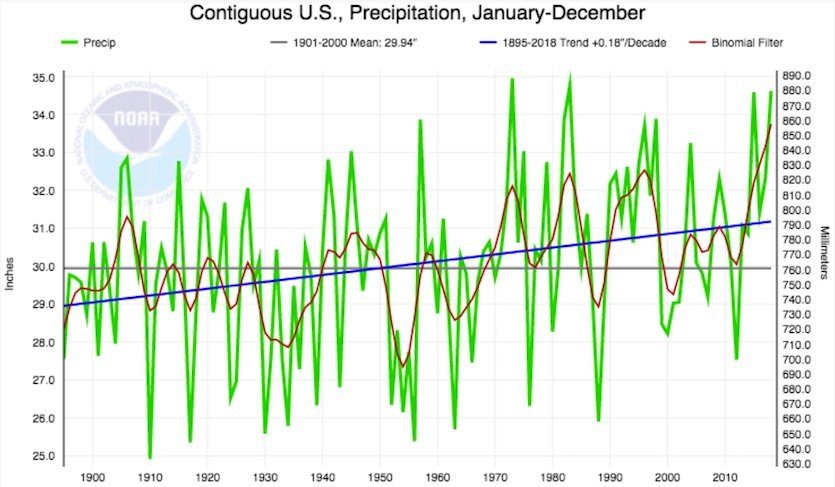
© NOAA/NCEI.Annual precipitation across the contiguous U.S. has increased by about 7% over the past century. Blue bar shows the linear increase since 1895, while the red curve is a smoothed version of the year-to-year numbers in green. When averaged over running four-year periods (not shown), the past four years are the wettest on record for the contiguous U.S.
The 12 months ending in April 2019 were the wettest year-long period
in U.S. records going back to 1895, according to the monthly U.S. climate summary
issued Wednesday by the NOAA National Centers for Environmental Information.
Averaged across the contiguous U.S., the total of 36.20" made the period from May 2018 to April 2019 the first year-long span ever to top 36". The old record for any 12-month period was 35.78", from April 2015 to March 2016.
Given the fierce drought-related impacts of the 2010s—including multiple deadly wildfire disasters from Tennessee to California—it may seem a bit counterintuitive that the nation has actually been getting wetter overall.
Across the contiguous U.S., average yearly precipitation has risen by about 2" over the past century, from around 29" to just over 31" (see Figure 1). For the entire nation, including Alaska and Hawaii, precipitation increased by about 4% in the period from 1901 to 2015, according to the U.S. National Assessment.




Comment: For additional information on the seasonal and regional details read more here . The article does however does include some rather tiresome man-made global warming propaganda.
Also of relevance: Ice Age Farmer Report: "Wettest Winter Ever" - Farmers Desperate - Massive Solar Storm Warning
2018 was wettest year on record in over 2 dozen cities in the East, Midwest, including Washington D.C. and Pittsburgh